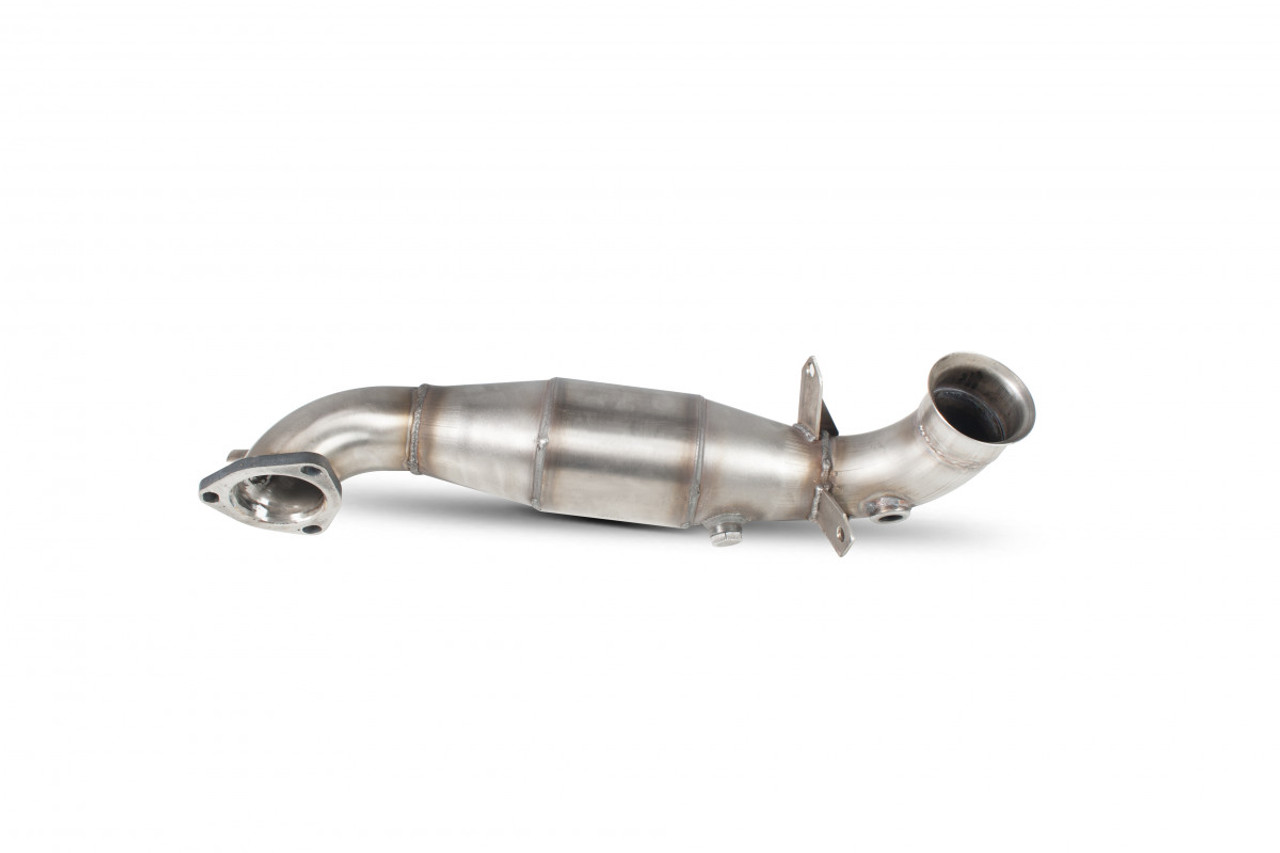The MINI Cooper R56: Your chic little urban runaround with go-kart handling and pep! But if you’re a real aficionado, “stock” is just the starting line. Going full Stage 2 with your R56 is more than just an ECU tune! It needs a performance enhancement to open up the breathing on these engines and allow it to live up to their full potential. The key component? The high-flow R56 downpipe for the MINI Cooper. Believe it or not, this deceptively easy upgrade is the cornerstone to unlocking massive power gains on your turbocharged hot hatch. Ready to see how this one part is the limiting factor in your R56’s power needs? Today, let’s talk about the world of performance exhaust tuning and find out what a quality mini downpipe can do to complete the performance.
The Science Behind the Upgrade: How a Downpipe Boosts Performance
The factory downpipe on the MINI Cooper R56 is a crimp-bent, small-diameter pipe that contains two very restrictive catalytic converters that are choking the airflow and killing the power. These stock pieces create a great deal of back pressure, which can keep hot exhaust gases from escaping the system effectively, causing a loss in power and an increase in drive pressures.
A high-flow MINI Cooper R56 downpipe eliminates this pinch point and allows the full flow of exhaust to pass through a more free-flowing design, typically including a high-flow cat (Or Catless for race use). This, in turn, enables faster evacuation of the exhaust gases into the turbine wheel and that is why it’s also called reduced turbo lag with quicker spool. This increase in efficiency itself translates directly into more power and torque at all RPMs, ultimately resulting in a punchier and peppier feeling car, especially under heavy load acceleration. This is a must-have piece for Stage 2 tunes.
Optimizing Flow and Sound: The Dual Benefit of a MINI Downpipe
Beyond the numbers, a good mini downpipe really makes your drive more enjoyable by drastically improving exhaust sound. With their restrictive elements removed, the downpipe surfaces a throaty exhaust tone that extracts what the car should’ve always sounded like from its turbocharged four-cylinder motor. Although the performance improvements, faster turbo spool and more power top end, are the main attraction to enthusiasts looking for Stage 2 tuning, an altered exhaust note is a big part of the package as well. At idle, it has a deeper, more enjoyable rumble than the MINI Cooper R56, while maintaining a sharper and meaner bark when you have your foot down. Once paired with an aftermarket cat-back exhaust system, the sound is nothing short of full-on, providing one hellacious listen to complement the car’s exhilarating behavior.
Choosing the Right MINI Cooper R56 Downpipe
Choosing the right MINI Cooper R56 downpipe is an important decision when it comes to performance and valvetronic longevity. You’ll have a couple primary options, and it will depend on your local emissions laws, the power you’re shooting for, and how big your bank account is.
- Catless Downpipes: Have the least amount of restriction and offer the highest possible performance gains but please be aware that they are ONLY for use off-road or on the track as they will trigger check engine lights (cels) as well.
- High-Flow Catted Downpipes: These feature a high performance catalytic converter with an increased number of larger cells (ie 200-cells) compared to the factory downpipes. Mostly they just open up a lot of flow and sometimes you can get away with them not throwing the check engine light and the vehicle will even pass some types of inspections. This is generally the ideal choice for a street driven Stage 2 vehicle.
- Material: Search for T304 stainless steel construction to ensure long service life, durability and superior corrosion resistance.
- Fitments: Make sure your new downpipe is a direct bolt-on to the MINI Cooper R56 so the install will be hassle free and seal correctly.
FAQs
Do I need a tune after installing a downpipe?
Yes, a Stage 2 ECU tune is required to take full advantage of the downpipe and prevent the Check Engine Light (CEL) from appearing.
Will a downpipe pass my annual vehicle inspection?
A catless downpipe will not pass; a high-flow catted downpipe might pass, depending on the strictness of local laws and testing methods.
Is installation difficult for the average DIYer?
It is a moderately difficult job requiring basic tools, jack stands, and patience, and is best performed by an experienced mechanic.
Conclusion
The discussion of ‘Necessary’ vs. Optional is black and white: There is no such thing as a true MINI Cooper S (R56) Stage 2 Upgrade without an aftermarket downpipe. Stage 2 tuning software is a match for this high-flowing downpipe, as the software ensures that exhaust emissions remain legal. Without this particular modification, the ECU re-flash will not produce its advertised power and you will end up pushing an already worked turbocharger against the stock overboost cut. Aftermarket high flow downpipe is more than a simple unrestricted pipe to mate your exhaust outflow more efficiently – it’s actually the horsepower mod that lets the R56’s turbo motor breathe and make power like it was meant to produce as designed by Mini Cooper factory- safely producing full stage 2 power works well in conjunction with upgraded magnet flow intake!

















